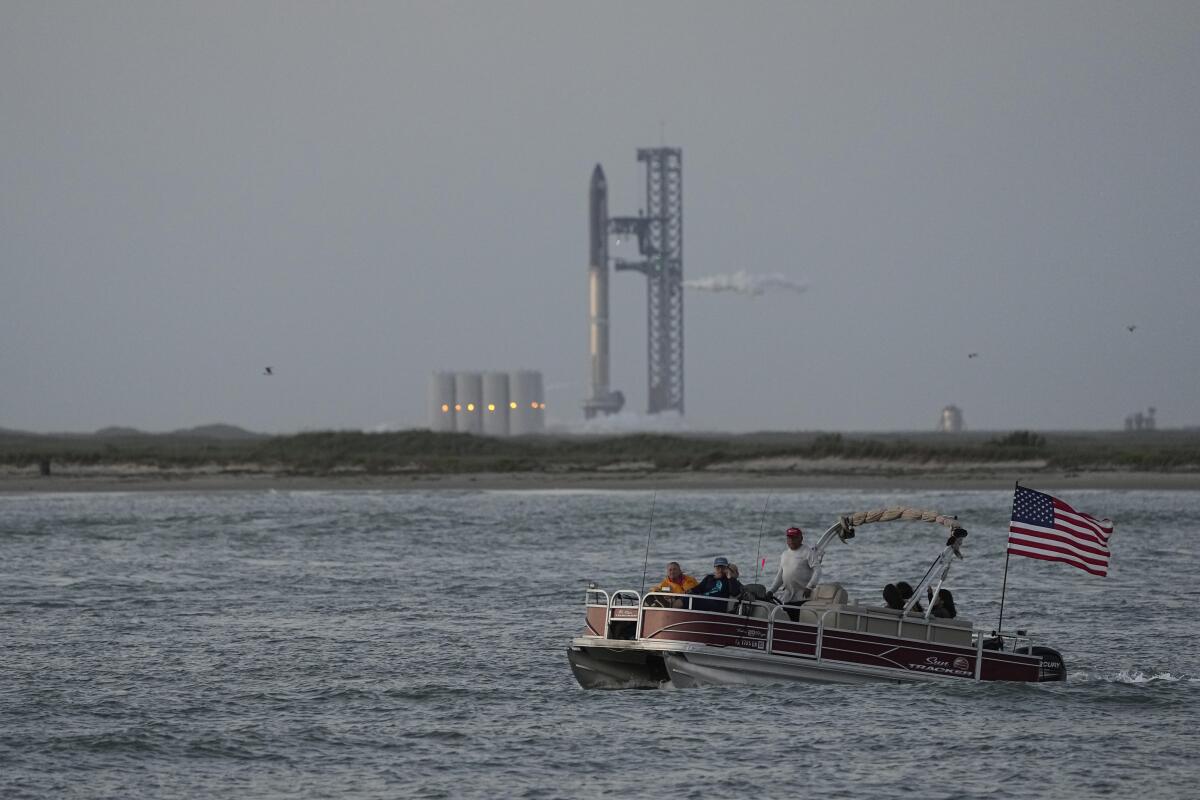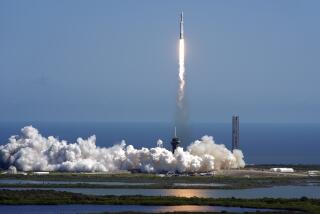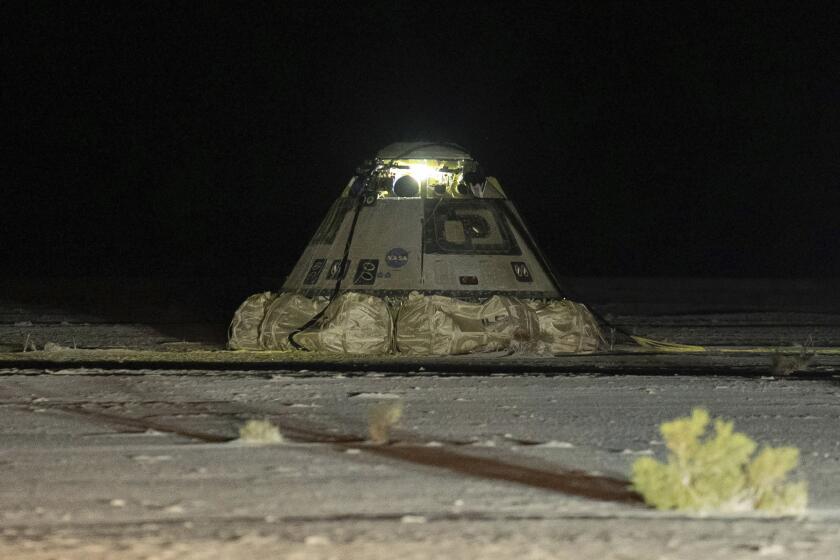SpaceX Starship successfully blasts off on third test flight

The SpaceX rocket that is intended to take humans back to the moon and someday to Mars completed its third and most successful test flight Thursday morning.
Stacked on top of a Super Heavy booster, the Starship rocket lifted off flawlessly at 6:25 a.m. PDT from the company’s Boca Chica, Texas, launchpad, with all 33 of the booster’s engines igniting and propelling Starship into space.
Less than three minutes later, the booster successfully separated from the rocket in what Elon Musk’s company calls a “hot stage” sequence, meaning engines on Starship lighted moments before the separation. The maneuver is intended to improve the rocket’s payload.
Starship then entered a “coast phase,” cruising through space for many minutes before reentering the Earth’s atmosphere toward a planned splashdown in the Indian Ocean. The company eventually lost contact with the craft and about 65 minutes into the flight it said the rocket was lost.
The company called the third flight a success, noting it was the longest flight yet of the rocket.
“This was a great step forward. It was a vast improvement from the last test flight. It was not a 100% success, but I would still call it a success because it achieved many of the milestones that SpaceX set out,” said Laura Forczyk, executive director of space industry consultancy Astralytical.
During the flight, Starship completed several objectives, including opening and closing payload doors that will be used to launch future satellites. It also initiated commands to transfer tons of propellant from one tank to another. The company will review the data to determine whether the transfer was carried out.
“Starship will make life multiplanetary,” Musk tweeted after the test flight was over.
The two previous launches of earlier versions of Starship ended in explosions not long after launch, but gave scientists valuable information about the rocket system, which is by far the most powerful ever built. SpaceX secured approval from the Federal Aviation Administration on Wednesday to conduct the latest flight.
Like the company’s Falcon rockets, the Starship and Super Heavy booster are both designed to return to Earth and be reusable, which Musk has said will dramatically lower the cost of space travel. On Thursday, SpaceX had hoped to bring the booster back down in a controlled reentry to the Gulf of Mexico but was unable to do so.
Starship is key to the company’s financial security. The spaceship and the Super Heavy booster it is attached to are intended to eventually replace the company’s workhorse Falcon 9 rocket. It is intended not only to carry cargo and crew to the lunar surface but also to launch more and larger Starlink broadband satellites than the company’s existing lineup of rockets can.
Last April, the company launched the Starship rocket for the first time. The rocket cleared the launchpad, at the southern tip of Texas near the Mexican border, and soared above the Gulf of Mexico for a few minutes before exploding.
SpaceX later said that a propellant leak caused multiple engines to fail and the explosion was caused by the rocket’s autonomous flight termination system, which is designed to make the rocket self-destruct if the software senses that it is going off-course or that its performance is unsafe.
The launchpad also was damaged on blastoff — sending debris flying across nearly 400 acres.
SpaceX’s second test flight in November lasted about twice as long, giving enough time for the booster and Starship to separate. The booster exploded moments after falling away, followed shortly by Starship. That explosion, too, was due to the rocket’s autonomous flight termination system.
Starship, with its Super Heavy booster, is the largest and most powerful rocket ever developed, taller than the Saturn V that sent Neil Armstrong to the moon and with about twice the thrust. If the company completes its mission to the moon, Musk will be a small step closer to his goal of taking humans eventually to Mars. The company already has a contract with NASA to carry people to the moon.
The aerospace company, formally known as Space Exploration Technologies Corp., doesn’t typically view in-flight failures during a rocket’s development as major setbacks, but rather as learning moments that help develop its vehicles further.
Regardless of the outcome of the latest mission, SpaceX still has a long way to go until people can take trips to Mars. Problems still to be solved include figuring out life support systems and how to land the spacecraft in one piece.
Bloomberg News contributed to this report.
More to Read
Inside the business of entertainment
The Wide Shot brings you news, analysis and insights on everything from streaming wars to production — and what it all means for the future.
You may occasionally receive promotional content from the Los Angeles Times.












